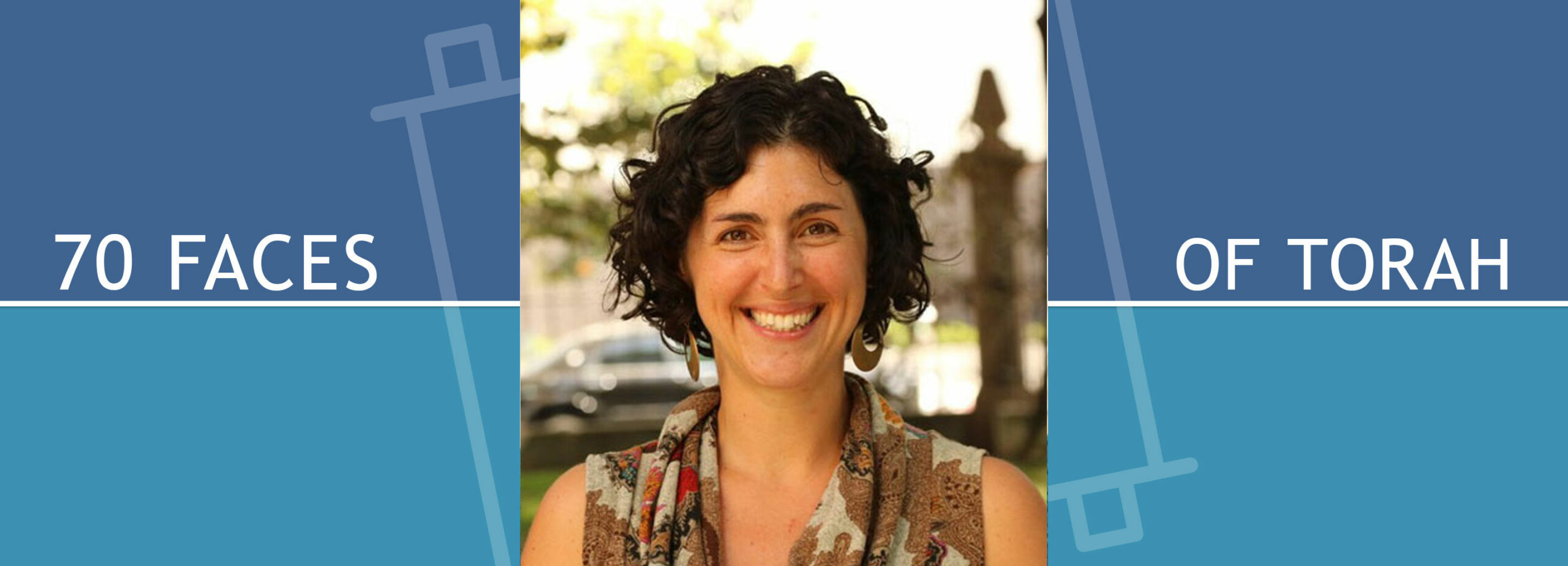Exodus Glitz, Glam and God

Parshat Tetzaveh (Exodus 27:20-30:10)
“Holy Holy Holy is the Lord of Hosts!” Chanting these words in the Kedusha, we stand, feet together, mimicking the angels on high. As we press up onto our toes, yearning for that Divine connection, we take on the posture of these pure, ethereal beings without physical characteristics that exist only in spirit.
Our conception of holiness often follows on this track, conjuring images of those things pure, simple, beyond the mundanity of the physical world. Our most sacred day is often considered to be Yom Kippur—a day on which we wear a plain white ceremonial robe known as a kittel, and which we prepare for by immersing ourselves in the mikvah, the ritual bath which requires us to peel away all outer layers—clothes, makeup, jewelry— so as to enter the waters as unadorned as the day we were born.
Yet, this week’s Torah portion, Tetzaveh, offers a strikingly different image of what holiness looks like.The parsha picks up in the midst of God’s instructions to Moses on how to construct the mishkan, the sacred space for God’s holiness to dwell among the people.The mishkan is to be made from: “Gold, silver and brass, fabrics made of blue, purple and scarlet (dyed wool), fine linen, goats’ hair, seal skins, ram skins dyed red, acacia wood, spices for oil and incense, precious stones” (Ex. 25:3-7). From the curtains to the lampstands to the altars for incense, the entire length of the parsha is dedicated to the aesthetic features of every facet of the sacred site.
Dancing between the role of draftsman and designer, in Parshat Tetzaveh God takes a break from detailing floor plans to discuss dress code. This week we read instructions for the creation of the sacred vestments that Aaron and the priests are to wear when they serve God in this new holy space. Their elaborate uniform includes, “a breastpiece, an ephod a robe, a fringed tunic, a headdress, and a sash.” The fabrics are to be woven through with the same palette of blues, reds, golds and fine linen as the mishkan. Then, sparing no flourishes, they are to be topped with glittering gemstones and finished with a hem of multicolored pomegranates and golden bells.
In his book The Body of Faith, philosopher of religion Michael Wyschogrod asserts a fundamental relationship between the religious and the aesthetic experience. He writes, “Because holiness is always, in one form or another, a manifestation of the presence of God, the holy space or time is the point of contact between God and the created universe.” Art, he argues, together with the study of Torah, “is the enterprise that deepens and develops Judaism.”
Holiness then, can be found not only through the plain and stripped down, but also through the dynamism of color, the intricacy of pattern, and the variations of texture. The sacred meeting point of God and humans as presented in Parshat Tetzaveh is one of color, sparkle, and beauty. Holiness as described here is very much rooted in the physical world and is found through an aesthetic experience that delights the senses.
It seems no coincidence that the week in which we read Parshat Tetzaveh almost always coincides with Purim—the holiday in which we go to great lengths to attend to the aesthetic, adorning ourselves with the wildest, glitziest, most colorful clothing we can find. Often seen as a silly holiday of carnival games and hamantaschen, the Zohar teaches that Purim is in fact connected to what is thought to be the most sacred day of the year—Yom Kippur. Playing off of the Hebrew names of the two holidays, the Zohar links one to the other saying that Yom Kippur is a day (yom) like Purim (k’Purim).
Though from seemingly opposite ends of the spectrum, both Purim and Yom Kippur offer pathways to holiness. Wearing all white on Yom Kippur we set aside our unique self-expression to affirm our foundational shared humanity. Through the glitz and glam and costume of Purim and Parshat Tetzaveh, we find holiness through rainbow pomegranates, braided gold and tinkling bells. This cacophony of beauty displayed through pattern, color and sound invites the unique and wild parts of ourselves that today rarely find expression in sacred space.
May we each discover our own holy meeting points with the Divine—both those found by embodying the posture and purity of angels, and those discovered in rich and raucous spectacular sumptuousness of the gifts found here on earth.
Entrepreneur and artist Rabbi Adina Allen is the Co-founder and Creative Director of The Jewish Studio Project — an arts-based nonprofit in Berkeley, CA that blends traditional Jewish learning with a creative arts studio. She is a 2014 graduate of the Rabbinical School of Hebrew College

